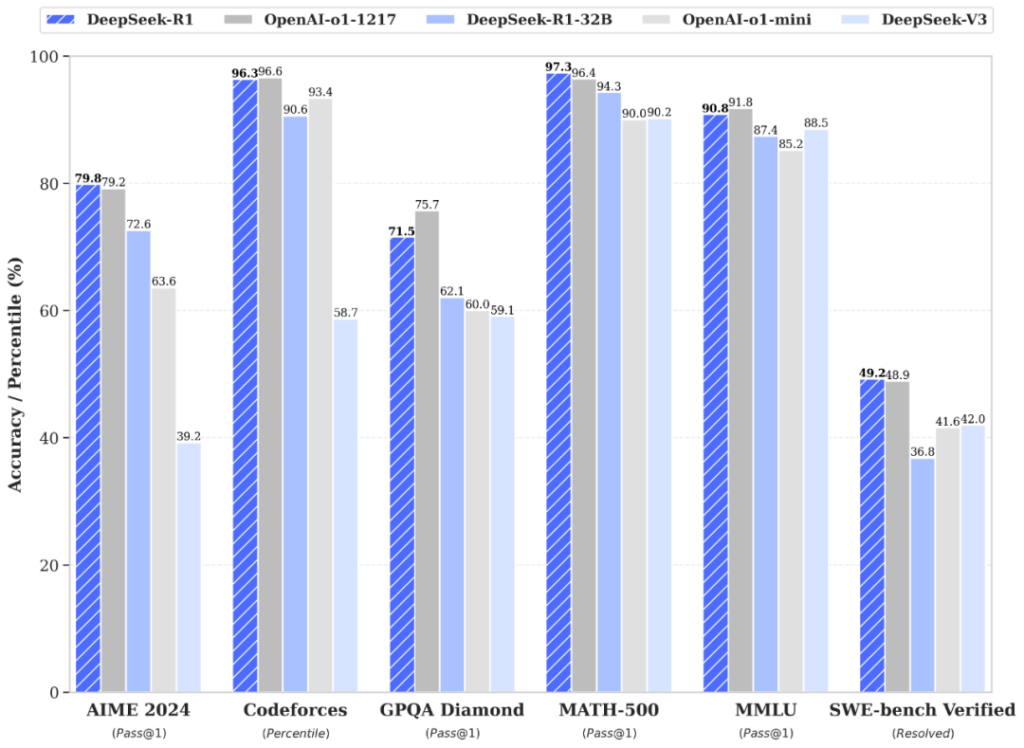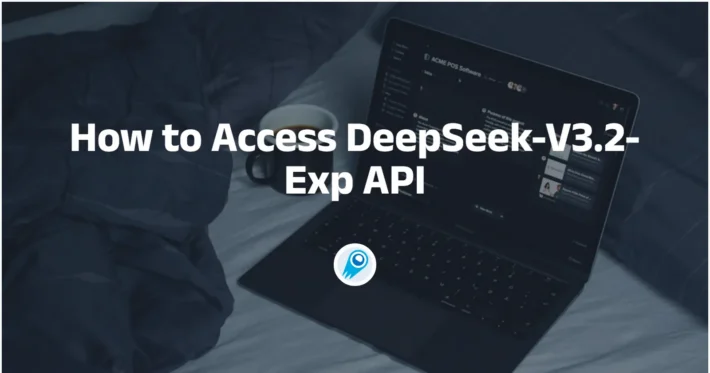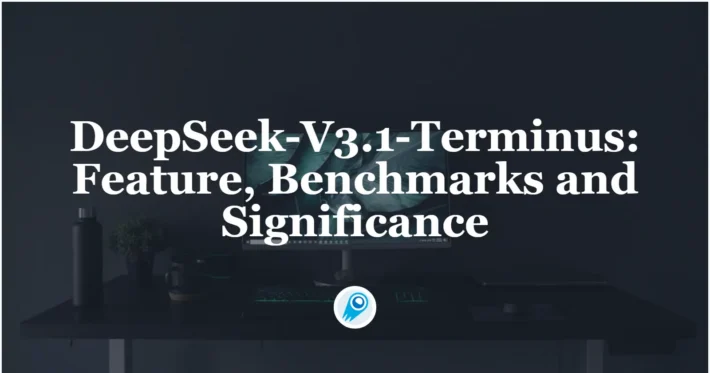DeepSeek R1 API (deepseek-r1-0528) is a powerful programming interface that provides access to deep search and data mining technologies, enabling the extraction of valuable information from large-scale datasets.Latest Models is deepseek-r1-0528 (As of May 2025).
deepseek-r1-0528
As of May 2025, the latest version of Deepseek r1 API is deepseek-r1-0528. Users can call in cometAPI.
Update Highlights
- Massive Parameter Scale: R1-0528 now leverages approximately 671 billion parameters—a modest increase over the original R1—enabling more nuanced pattern recognition and deeper context tracking .
- Smarter Reasoning: Internal evaluations show measurable gains on logic-intensive benchmarks, with more coherent multi-step inference across complex queries.
- Enhanced Code Generation: Code-completion accuracy has improved, reducing syntax errors and producing more idiomatic constructs in languages such as Python and JavaScript.
- Greater Reliability: Response consistency and failure rates have been optimized, with fewer time-outs and lower instances of hallucination on factual tasks.
See Also DeepSeek Unveils DeepSeek R1-0528 Update to Its Open-Source Reasoning Model
Basic Information on DeepSeek
DeepSeek is a deep learning model specifically designed for big data processing and analysis, with a focus on optimizing tasks such as information retrieval, natural language processing, and data mining. Developed by a team of AI experts from leading universities and companies globally, it integrates cutting-edge techniques and state-of-the-art research findings.
Technical Description and Key Features of DeepSeek
The model utilizes deep neural networks (DNN) that mimic the neural connections of the human brain, enabling efficient processing and analysis of large datasets. It incorporates a multilayer perceptron (MLP) structure while integrating features from convolutional neural networks (CNN) and long short-term memory networks (LSTM), making it highly effective in handling images, text, and sequential data.
Key features of DeepSeek include:
- Multimodal Data Processing: Capable of efficiently processing various data types, including text, images, and audio, this capability expands usability across different domains, such as combining text analysis and image recognition for comprehensive assessments.
- Adaptive Attention Mechanism: An adaptive attention mechanism intelligently emphasizes important data attributes, significantly boosting accuracy in tasks like natural language processing and sentiment analysis.
- Scalable Modular Architecture: With a modular design, it allows users to customize and optimize according to specific needs, combining various network layers and activation functions for a tailored configuration.
- Real-time Data Update and Learning: Supporting real-time data stream processing and online learning, it continually updates decision-making abilities in dynamic environments.
- Enhanced Training Efficiency: Utilizing advanced optimization algorithms like the Adam optimizer in large-scale distributed computing, training time is shortened while maintaining high precision.
- Robust Fault Tolerance: Even when dealing with incomplete or noisy data, strong performance is maintained. Robust loss functions and regularization techniques ensure adaptability under suboptimal conditions.
Through techniques like adaptive learning rate adjustments and regularization, overfitting is prevented, and generalization is enhanced. Inclusion of the latest attention mechanisms allows effective capture of key data features, improving task accuracy and efficiency.
Technical Details
- Model Architecture: Featuring multilayer neural networks with integrated CNN and LSTM modules, the model handles multidimensional data inputs. It uses activation functions like ReLU (Rectified Linear Unit) and tanh (hyperbolic tangent) for learning nonlinear features.
- Training Algorithm: Employing the Adam optimization algorithm, a leading adaptive gradient descent method, parameters are efficiently updated for convergence in complex tasks through the cross-entropy loss function.
- Data Input: Supporting diverse input formats, including text, images, and time-series data, preprocessing is employed to standardize, normalize, and extract input data features, enhancing training efficiency.
- Model Evaluation: It has been rigorously evaluated on multiple tasks, excelling in metrics like classification accuracy, recall, and F1 score, consistently outperforming mainstream models in text classification, image recognition, and sequence prediction tasks.
Technical Indicators
- Text Classification: Achieves accuracy and F1 scores above 95%.
- Image Recognition: Attains over 98% Top-1 accuracy.
- Sequence Prediction: Shows over 30% reduction in mean absolute error and mean square error compared to traditional models.

Comparison of DeepSeek with Other AI Models
Conclusion:
As technology progresses, DeepSeek stands out as an advanced deep learning model showcasing substantial potential across diverse fields. Its outstanding performance metrics and wide-ranging applications serve as catalysts for innovation and development within industries. Looking ahead, with the integration of more research advancements, DeepSeek is poised to exert an even greater influence across various domains, driving further advancements in AI technology.
How to call Deepseek R1
Deepseek R1deepseek-r1-0528
deepseek-r1-0528- Input Tokens: $0.44 / M tokens
- Output Tokens: $1.752 / M tokens
Required Steps
- Log in to cometapi.com. If you are not our user yet, please register first
- Get the access credential API key of the interface. Click “Add Token” at the API token in the personal center, get the token key: sk-xxxxx and submit.
- Get the url of this site: https://api.cometapi.com/
Useage Methods
- Select the “
deepseek-r1-0528 - Replace <YOUR_AIMLAPI_KEY> with your actual CometAPI key from your account.
- Insert your question or request into the content field—this is what the model will respond to.
- . Process the API response to get the generated answer.
For more model acccess information in Comet API please see API doc or or try them in the AI Playground.
For Model Price information in Comet API please see https://api.cometapi.com/pricing.




